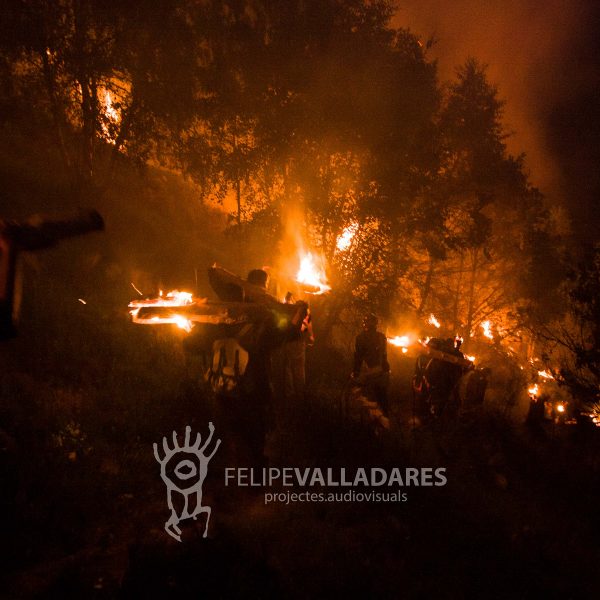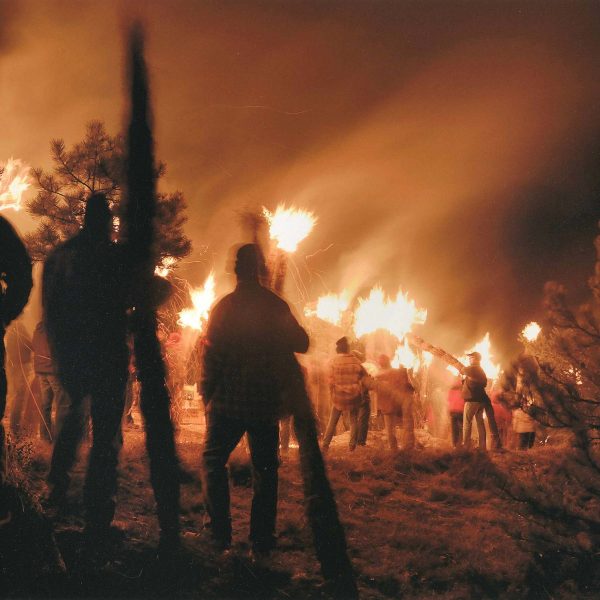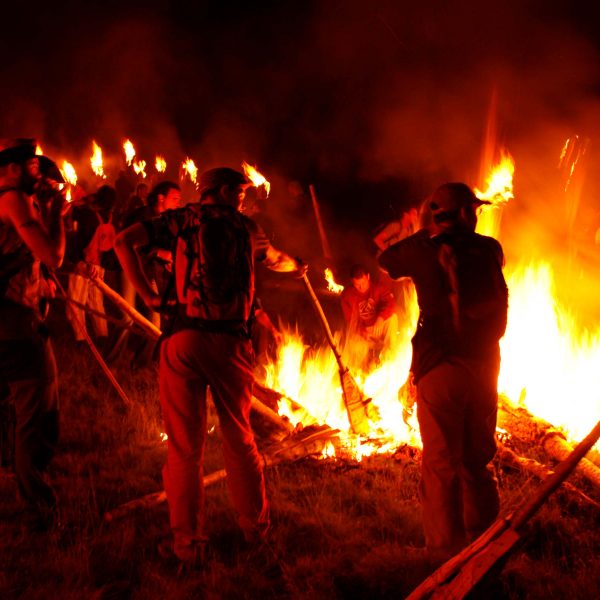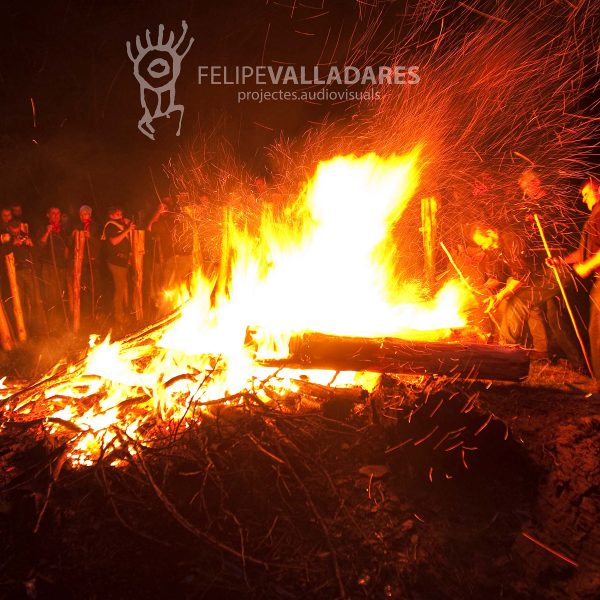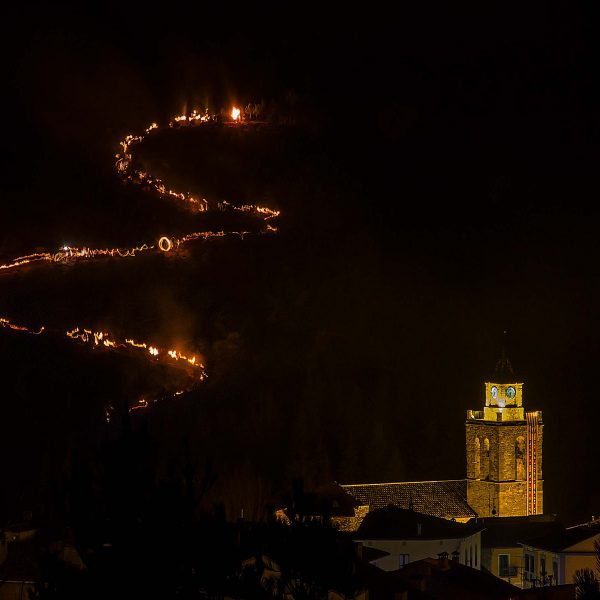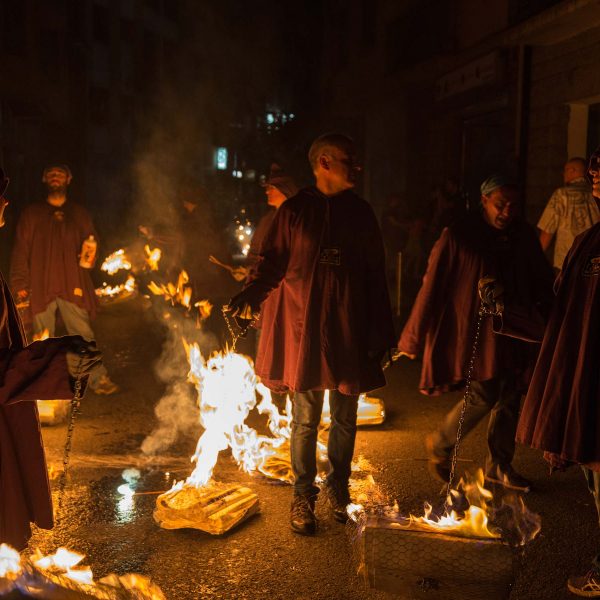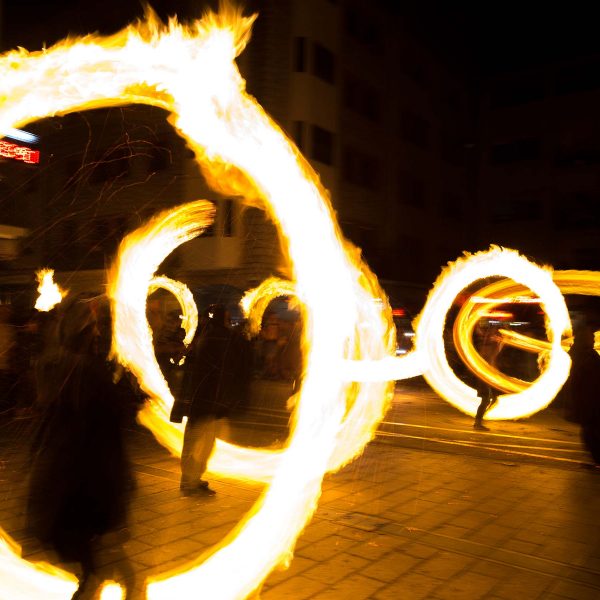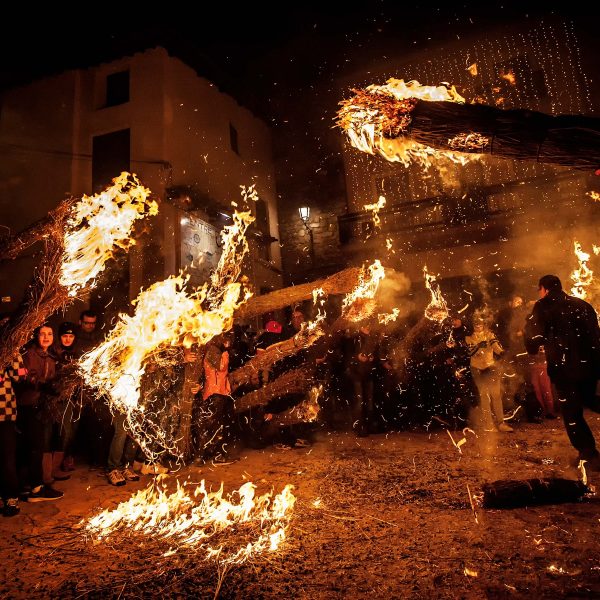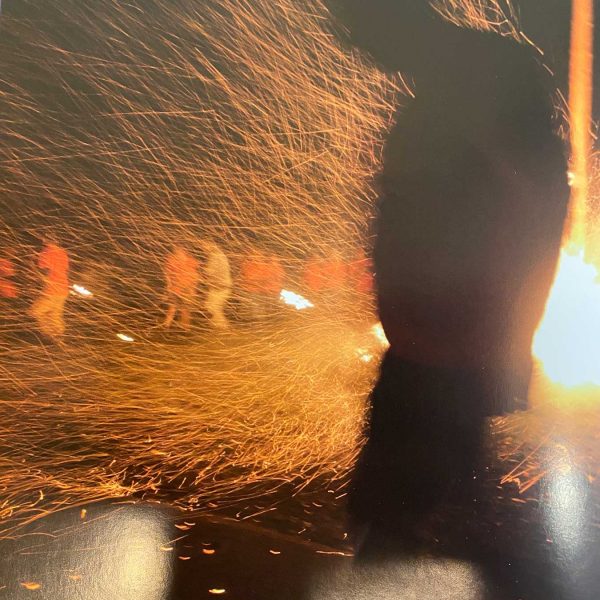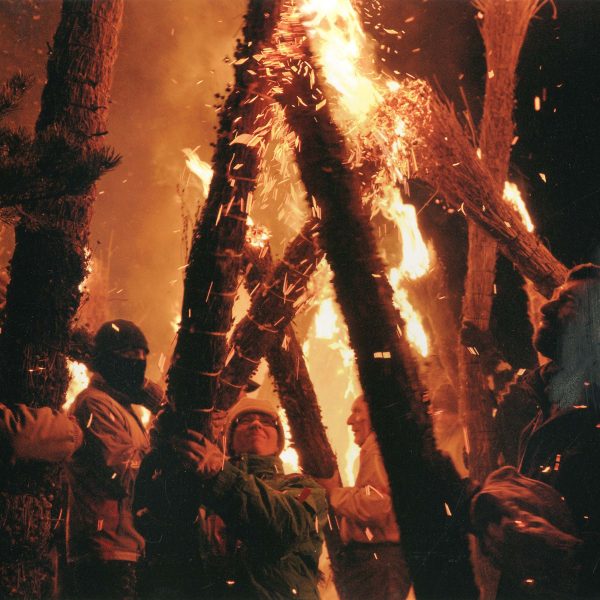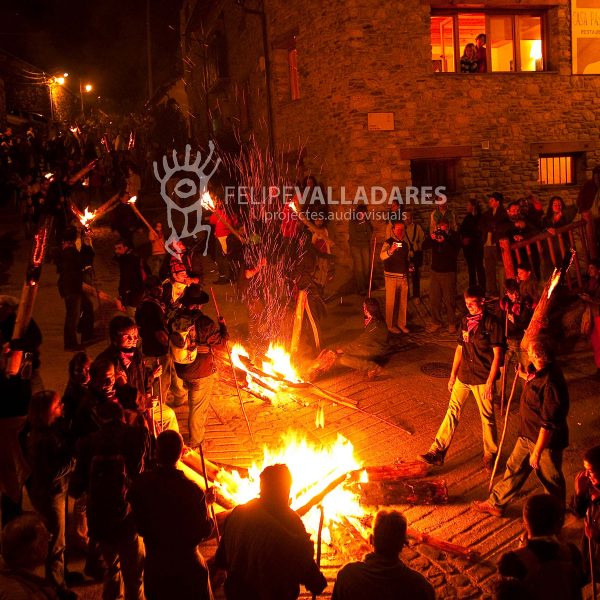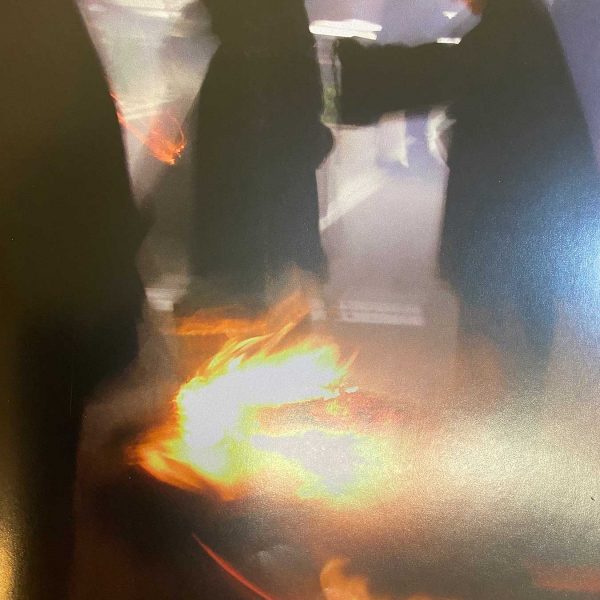When night falls, the fallaires light their falles from the beacon (the faro) and begin their descent to the village. The falles form a long line of fire which is visible from the village, and the fallaires are greeted enthusiastically with music and applause when they enter the village. The first to enter the village are generally the children, who have not had to walk so far, and if there are different age groups, they are followed by the older villagers. The young adults are the last to walk or run into the village and they usually make several laps around the town.
. In some cases, they light the falles of the villagers who remained in the village. The descent, which causes enormous excitement, ends with the falles being thrown to the ground in the village square or in a field on the edge of the village, or with the lighting of the falla major. In symbolic terms, fire has come down from the mountain and the fallaires have returned it to the community. The night continues with music and dancing until the early hours of the morning.
The beacons
The words faro, far, haro, and taro come from the Greek pharos, the name of the island of Pharos on which there was an immense lighthouse in classical antiquity. The English translation used here is a “beacon” which denotes a bonfire lit for war or defensive purposes, which doesn’t share the religious and ritual connotations of the Catalan and Occitan words.
In some localities, beacons are located in hermitages or chapels and therefore bear the name of that place (such as the hermitage of Sant Quirc, in Durro, or Sant Aventí, in Bonansa). The locations of the beacons have varied over time and have gradually been moved closer to the village to make the descent shorter.
Nevertheless, in some villages the beacons are located high in the mountains: in Taüll at 1,760 m above sea level; in Boí at 1,460 m, and in Isil at 1,530 m. Apart from their location, beacons have an important symbolic value, as they are used to light the torches that will be carried down to the village. Fallaires generally have dinner at the beacon while they waiting for it to get dark. They then light the fire, a ritual symbolizing the rekindling of the fire, the flames that they will carry down to the village.
Depending on the distance, the fallaires go up to the beacon before or after dinner. In Aneto, for example, the dinner is in the village with the other neighbors. The routes vary from a few minutes to much longer distances for which 4 by 4 vehicles are needed.
Snakes of fire
One of the highlights of the festival is the descent of the fallas at dusk. The fallaires first light their falles from the beacon, a magical moment that fills the darkness with light, and then they begin the descent. The routes are of varying distances, depending on the location of the beacon, the quality of the roads, and whether the fallaires go directly down the mountain or follow a path. The descent therefore varies from a few minutes to three quarters of an hour.
People from the village, and even from other villages, can see an impressive scene from afar: the torches snaking down the mountain along the mountain paths.
The descent is a moving event for a number of reasons: the physical effort needed to carry the fallas; the fire and smoke, and the crackling noise made by the fire. In many villages there are different routes for people of different ages: children usually start from points close to the village and are the first to arrive. They are followed by older villagers, and, lastly, by the young adults.
Arrival in the village
The arrival of the “heroes and heroines” who bring fire to the village, where the rest of the villagers are awaiting them, is quite an event.
In many villages, especially in the Ribagorça district, the fallaires run into the village with the fallas, amidst the applause of the public awaiting them. They usually go around the town on a set route. In other towns, such as Bagà, the people who have stayed in the village light their own fallas from the fire of those who have descended.
In Isil, the fallaires go to the cemetery and they make a sign on the gate with the tip of the lighted falla, in homage to their ancestors. In other places, they walk around the church or the square between three and seven times. In yet other places, they walk around the whole village before throwing the falla onto the bonfire, making an impressive spectacle. In Arties, the taro is dragged through the streets and people jump over the flames.
Balls of fire
In Andorra, Sahún in the Aragonese Ribagorza, and Les in the Aran Valley, the falles are swung in circles. In Andorra, in particular, the tradition of spinning fallas had been kept alive by children, but adults took over the tradition in the 1980s and decided that it was too dangerous for children. However, in a bid to include children, a new kind of falla was created: a ball of light that changes color as it spins.
When a fallaire comes of age in Andorra, he or she graduates from spinning balls of light to balls of flames. The “baptism of fire” takes place in the placeta de Pujal and consists of burning a traditional falla to the sound of the fabliol (a type of flute), the tamborí (small drum), and the song “mes peres que fulles”(more pears than leaves). The Falles festival in Andorra is constantly evolving and changing.
Playing with fire
In many villages people “challenge” the fire in a variety of different games. In the porticoed square in Bagà, for example, the fallaires throw embers at each other. And in Arties and many other villages, people jump over the bonfires or the falla itself.
Playing with fire links those who have brought the fire from the mountain to the other villagers, providing a kind of collective catharsis. The fire brings the whole village together.
Fire, a symbol of community
Playing with fire is a way to control it and leads on to the festivities that continue for much of the night. Like a rite of passage, the fallaires have brought fire to the community, a symbol of the union linking all the inhabitants of the village. Once the fire is under control, the party continues with music and dancing.
 Occitan
Occitan



